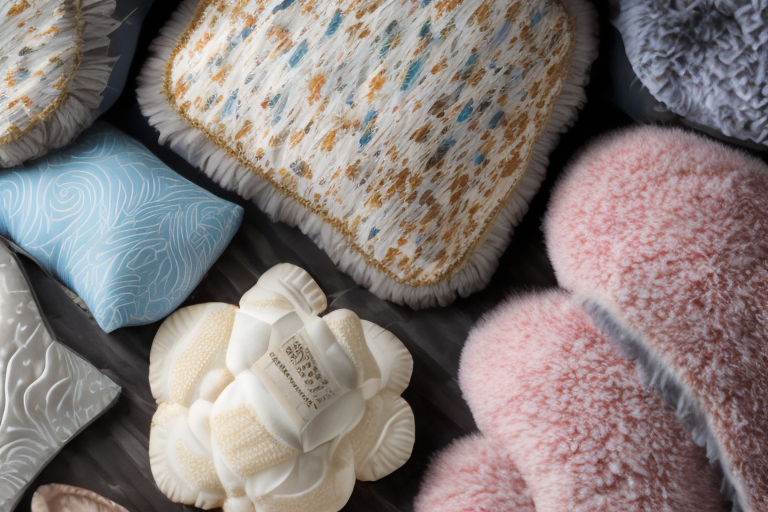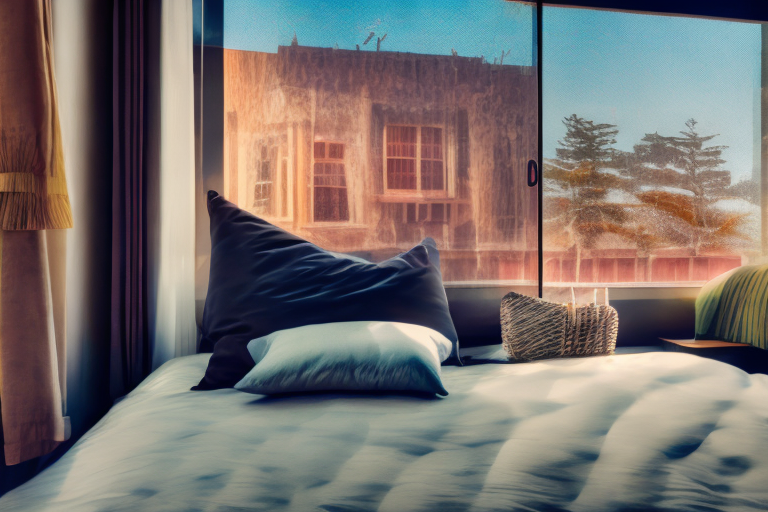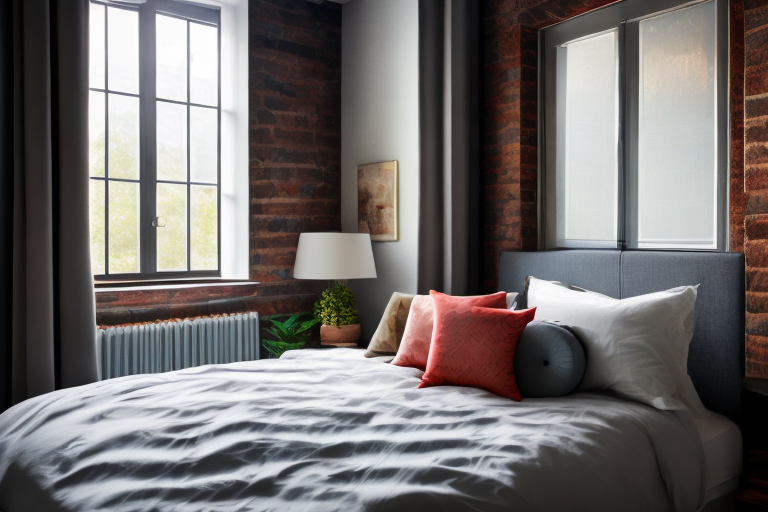When it comes to bedding, down comforters stand out as a luxurious and warm sleeping option. But with their often premium prices, are they really worth it? This beginner’s guide explores the pros, cons, and what to look for when shopping for a down comforter.
What Exactly Are Down Comforters?
A down comforter is a type of duvet or quilt filled with insulating down feathers sourced from ducks or geese. The finest down comforters use fill that meets the Responsible Down Standard (RDS) for ethical sourcing.
Down offers superior breathability and loft compared to synthetic alternatives:
- Down clusters trap body heat while allowing moisture vapor to pass through, keeping your optimal sleep temperature steady.
- The three-dimensional structure gives down comforters their signature fluffiness. More loft means better insulation.
[image]
Figure 1. Down offers excellent breathability and insulation
On Reddit, users rave about the luxurious comfort down offers:
“I will never go back to anything other than a down comforter! Once you try it, you won’t want anything else.”
But down isn’t for everyone. Let’s analyze the debate.
The Down Comforter Debate: Pros and Cons
Advantages
✅ Excellent insulation to keep you warm
✅ Highly breathable to prevent overheating
✅ Lightweight and easy to move around
✅ Provides hotel-style luxury at home
✅ Durable with proper care
✅ Natural and biodegradable
Disadvantages
❌ Expensive upfront cost
❌ Require more careful cleaning
❌ Allergies to natural feathers
❌ ethically sourced down is limited
On Reddit, there is no consensus on whether the signature fluffiness warrants the premium price tag. But focusing on fill power and quality helps ensure you extract maximum value from your investment.
Down Comforter Fill Power and Other Key Factors

Fill Power
The most important measurement is fill power, indicating loft and insulation:
- Higher fill power (600-900+) means more fluff, warmth, and durability
- Lower fill power (~500) contains less expensive down and compacts over time
Ideally, choose the highest fill power in your budget.
Fill Weight
Fill weight measures the total ounces of down inside. Choose based on your warmth needs:
- Lightweight: Great for summer or hot sleepers
- Mid-weight: Provides versatility across seasons
- Heavyweight: Offers maximum winter warmth
This chart compares different fill power and fill weights:
| Fill Power | Lightweight | Mid-Weight | Heavyweight |
|---|---|---|---|
| 600-650 | 16 oz | 22 oz | 28+ oz |
| 700-800 | 22 oz | 28 oz | 34+ oz |
| 850+ | 25 oz | 35+ oz | 45+ oz |
Table 1. Comparing down comforter fill weights
Shell Fabric
The outer shell fabric impacts durability, breathability and aesthetics. Look for:
✅ Thread count ~300+
✅ Materials like cotton sateen or silk
✅ Tightly woven to prevent feathers escaping
Top-Rated Down Comforter Brands
Here are five excellent down comforter brands to consider from retailers like Amazon, Wayfair and Bed Bath and Beyond:
| Brand | Details | Price |
|---|---|---|
| Brooklinen Down Comforter | 700 fill power, ultrasoft woven cotton cover | $249+ |
| Parachute Down Duvet Insert | 750 fill power, sateen cotton cover, 3-year warranty | $349+ |
| The Company Store LaCrosse | Available in 650 to 700 fill power | $220-$580 |
| Pacific Coast Feather Company | Range from 350 to 1200 fill power | $100-$580+ |
| Royal Hotel’s Goose Down Comforter | Box stitch construction, 300 thread count damask stripe cotton cover | $170-$500+ |
Key Takeaways:
✅ Focus on fill power of 650+ and higher
✅ Choose fill weight based on your warmth needs
✅ Material quality affects durability and performance
Are Down Comforters Worth the Cost?
The main hesitation most shoppers have about down comforters are the premium prices, especially for high fill powers.
“I’d love to try one, but I can’t get past how expensive they are! Are they really worth it?”
Here are some things to consider:
| Benefit | Explanation |
|---|---|
| 🚀 Superior Comfort | Exceptional softness and breathability for the ultimate sleep experience |
| 🌡️ Perfect Temperature | Keeps you warm in winter, cool as a cucumber in summer |
| 🛌 Enhanced Sleep Quality | Less tossing, turning and waking up throughout the night |
| 💪 Durability | With proper care, a quality down comforter will last over a decade |
| 🔄 Seasonal Flexibility | Many options easily transition between summer and winter |
| 💵 Cost Per Use | Breakdown the price over thousands of nights’ sleep over its lifespan |
| 👍🏻 Health Factors | Natural materials avoid off-gassing issues common in cheaper synthetic options |
Table 2. Weighing the benefits of premium down comforters
Over time, a good down comforter saves money by lasting years and providing unparalleled comfort night after night.
What About Alternative Down Comforters?

If natural down isn’t within budget, not ethically sourced enough, or you have allergies, alternative down comforters are excellent options:
⭐ Synthetic Fill:
- Polyester and microfiber fills offer similar warmth at lower prices
- Easy to clean and hypoallergenic
- Not as fluffy or durable as down
⭐ Other Materials:
- Cotton, wool, silk, bamboo and eucalyptus provide natural, breathable comfort
- Often cheaper than down
- Vary widely in warmth, weight and feel
Matching Your Needs to the Right Down Comforter
Beyond standard features, several specialized varieties suit personal preferences:
🤒 Allergies and Asthma
- Seek RDS certification, hypoallergenic outer fabric, and bamboo covers
- Silk comforters are moisture-wicking, hypoallergenic and heat-regulating
🥵 Hot Sleepers
- Favor lightweight summer (~400-500 fill power) or cooling eucalyptus comforters
- Some have moisture-wicking fabric like Outlast® technology
❄️ Cold Sleepers
- Pick a heavyweight (28 oz+ fill) comforter with 800+ fill power
- Add a cotton cover or extra blanket for additional warmth
👶 Kids & Babies
- Softer fabrics like flannel or cotton sateen make ideal children’s comforters
- Use a dust mite resistant cover for allergies and easy cleaning
Responsible Down Standards Matter
Seeking out ethical down ensures humane practices:
- The Responsible Down Standard (RDS) certifies humane treatment of geese and ducks
- Look for the RDS logo when buying down
- Synthetic alternatives have less environmental impact
Caring For a Down Comforter
With proper maintenance, a quality down comforter can last over a decade. Here are some care tips:
✅ Machine or hand wash gently 1-2 times per year
✅ Use mild soap and low heat
✅ Always air tumble dry with wool balls
✅ Store loosely in breathable bag
❌ Avoid harsh chemicals or bleach
The Final Verdict: Yes, Invest in Down!
Although the upfront cost seems intimidating, a good down comforter provides unbeatable plush comfort that lasts for years. Take your time researching quality materials, fills and weights to ensure you extract maximum durability and enjoyment out of your investment. With proper care, you’ll be counting sheep – in luxurious style – for years to come!
Frequently Asked Questions
Q: How often should you replace a down comforter?
A: With proper care, a quality down comforter will last over 10 years before needing replacement. Lower quality may start deteriorating after 5 years.
Q: What’s the warmest down comforter fill power?
A: For maximum warmth, choose an 800+ fill power comforter paired with a heavy fill weight around 45 oz. The highest warmth ratings are 800-900 power.
Q: Why are down comforters so expensive?
A: Ethically sourced premium goose or duck down is rare and labor-intensive to produce. Prices also reflect lasting durability across decades.
Q: Is a down comforter good for all seasons?
A: Many down comforters easily transition across seasons with different duvet covers. Choose mid-weight fill around 700 fill power and 28 oz fill weight.
Q: What thread count is best for a down comforter?
**A: Look for a tight thread count of around 300-500 for outer shell fabrics. This prevents feathers escaping while allowing good breathability.
Q: How do I wash a down comforter at home?
A: Machine or hand wash gently 1-2 times per year using mild soap and low heat. Always tumble dry on low with wool dryer balls.
Q: What’s the difference between duck down and goose down?
A: Goose down clusters tend to be larger with higher loft. But well-sourced duck down offers excellent insulation too. Pick based on fill power, not just down type.








